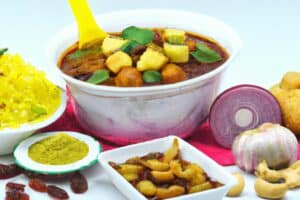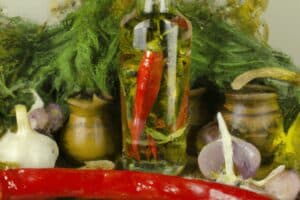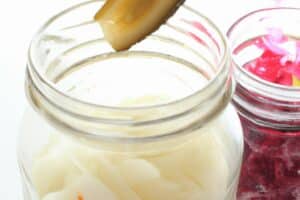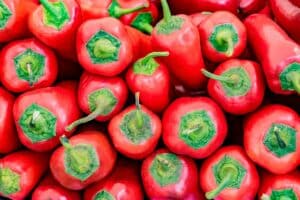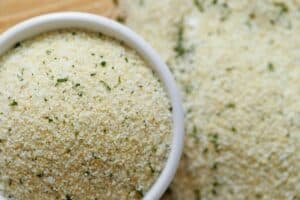Red pepper flakes are simply dried and crushed red peppers. Unlike fresh peppers, they last for ages, ready and waiting for their chance to breathe fire into a meal.
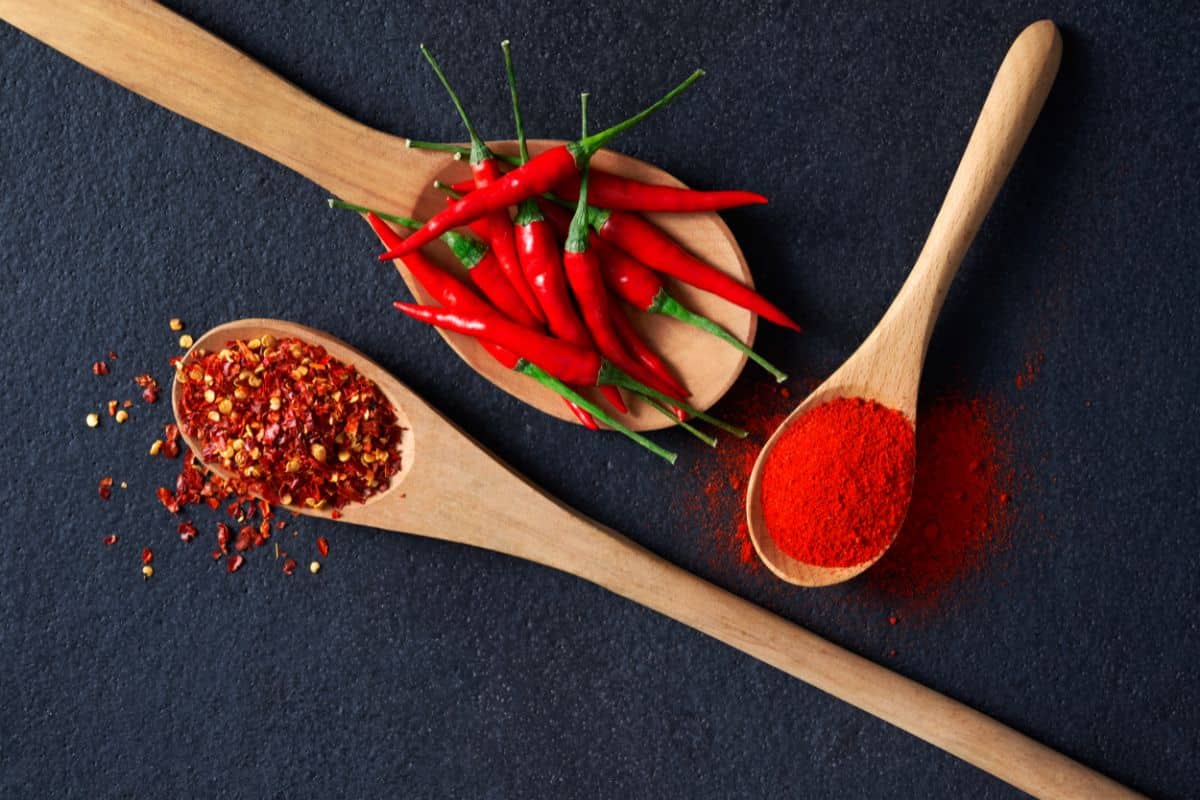
Anything that benefits from a spicy kick is fair game for red pepper flakes — We’re talking pizzas, soups, stir-fries, tacos, burritos, enchiladas, fajitas, curries… you name it!
They also make a dynamite addition to rubs, marinades, chutneys, and a myriad of sauces.
There’s really nothing like a generous sprinkle of red pepper flakes to kick the spice factor of food up quickly and easily.
Well, scratch that… There are a few things that are very like red pepper flakes in appearance, taste, and heat.
The spice demon diners out there will inevitably run out of these ruby flakes at some point, but by digging out some cayenne pepper, chipotle powder, or chili powder from the depths of the kitchen cupboards, no one has to cancel their trip up spice mountain.
Red Pepper Flakes Substitutes: Nutritional Value & Cooking Ratio
| One teaspoon of: | Calories | Fat | Carb | Protein | Fiber | Ratio |
| Cayenne Pepper | 5.7 | 0.3 g | 1.0 g | 0.2 g | 0.5 g | 0.5:1 |
| Chipotle Powder | 7.6 | 0.4 g | 1.3 g | 0.4 g | 0.9 g | 1.5:1 |
| Chili Powder | 7.6 | 0.4 g | 1.3 g | 0.4 g | 0.9 g | 1:1 |
| Paprika | 6 | 0.3 g | 1.2 g | 0.3 g | 0.8 g | 2:1 |
| Homemade Red Pepper Flakes | 5.7 | 0.3 g | 1.0 g | 0.2 g | 0.5 g | 1:1 |
What Do Red Pepper Flakes Taste Like?
It’s hard to distill the flavor of red pepper flakes in words, partly because, besides the predominant heat, they’re really quite subtle, and partly because they can be derived from a number of different chilies.
The four usual suspects are red jalapeños, cayenne peppers, Anaheim peppers, and serrano peppers.
Your pot of red pepper flakes might be made of one, two, three, or a mixture of all four of these very different peppers.
Now, being that the spicy DNA can shift from pot to pot, you’ll notice that some are hotter than others, and the taste varies as well.
However, generally speaking, beneath the spiciness, you’ll pick up an earthy undertone, as well as a very faint sweetness.
Red Pepper Flakes Nutritional Value
One teaspoon of red pepper flakes contains:
- 5.7 calories
- 0.3 g fat
- 1.0 g carb
- 0.2 g protein
- 0.5 g fiber
However, the above values only tell a fraction of the red pepper flakes story.
Rich in vitamins A, C, B-6, and E, as well as minerals such as magnesium, iron, and potassium, red pepper flakes have a wealth of health benefits, including but by no means restricted to:
- Alleviation of digestive issues
- Pain relief
- Reduction of inflammation
- Improved heart health
- Boosted metabolism
- Hunger control
Having said that, unless you’re a real spice wizard/witch, you’ll likely only be consuming small amounts at a time, so, while these flakes can have the aforementioned benefits, they’ll be subtle, if noticeable at all.
Substitutes For Red Pepper Flakes
It’s always a bummer when your red pepper flakes bottom out, but, thankfully, there is a plethora of ingredients you can use in their stead — They’re so good, you may not even notice the difference!
- Cayenne Pepper
- Chipotle Powder
- Chili Powder
- Paprika
- Homemade Red Pepper Flakes
1. Cayenne Pepper
As one of the principal peppers used to make red pepper flakes, it should come as no surprise that cayenne pepper is an excellent stand-in, but be warned… This stuff is muy caliente!
It’s best to take it easy when incorporating it into your meal.
We’d recommend using about 50% less cayenne pepper than red pepper flakes to start with. And hey, you can always add more later if you feel you can handle the spice.
Popular in Mexican and Asian cuisines, if you’ve ever had a lip sweat-inducing meal before, then there’s a good chance cayenne pepper was in the mix somewhere.
Strangely, it’s gained momentum as a key ingredient in baking circles — Just a small sprinkle can really bring your cookies to life!
It doesn’t have the subtle sweetness of red pepper flakes, but it does bring a satisfying fruitiness to the table.
Like red pepper flakes, it has some notable health benefits. For instance, it’s known to have anti-inflammatory properties and can enhance cardio health.
2. Chipotle Powder
Chipotle powder is the smokey cousin of red pepper flakes, a culinary badass with the power to bring the heat and then some, but you may have to increase the quantity by about 50% if you want it to match that of red pepper flakes.
From pizzas to salads and beyond, you can use chipotle powder in literally any food that you’d normally use red pepper flakes in, but that’s not to say it doesn’t put its own stamp on a meal.
Chipotle powder is an awesome way to introduce a bit of color to a dish, so if you want your meals to look as vibrant as they taste, it’s a solid choice.
3. Chili Powder
Chili powder is by and large just a ground version of red pepper flakes, making it a fine substitute, but if you want it to mimic the heat of its flaked brethren, be sure to use the spicy stuff.
See, chili powder is available in both mild and hot forms. If you want to jack up the flavor of a meal alone, opt for mild. If you want the full smoke-coming-out-of-your-ears impact, opt for hot.
As it’s basically the same ingredient as red pepper flakes, chili powder carries all the same health benefits, which is definitely a bonus if you use red pepper flakes specifically for the nutritional gains.
4. Paprika
Rich, smoky, fruity, and mildly sweet, paprika’s flavor profile is almost like a Frankensteinian mix of all the other ingredients discussed here today.
The fiery red color is great for adding visual intensity to a meal, and an elegant sprinkle also makes for striking plate decoration.
Although hot paprika is readily available, most is quite mild, so feel free to double the quantity when adding it to a meal that normally calls for red pepper flakes.
Of all the substitutes on this list, paprika is the best carrier of flavor, so if you’re looking for a robust addition to elevate a meal, it’s a no-brainer.
5. Homemade Red Pepper Flakes
What better substitute for red pepper flakes is there than, well… red pepper flakes?
Of course, it’s much easier to buy some pre-crushed flakes from the store, but homemade is certainly an option for the pepper-heads out there.
The beauty of this substitute is that you’re in charge of the pepper ratios, so you can tailor the flakes to your liking, but how would you go about making red pepper flakes at home?
It’s actually pretty easy. Just dry your chilies out in the oven with the door cracked or in a dehydrator, then pulverize them with a pestle and mortar.
Popular Recipes That Call For Red Pepper Flakes
Wherever there’s a need for spice, red pepper flakes can be found, but there are a few meals in particular that share significant synergy with this fiery ingredient.
- Crispy Lemon Pepper Panko Chicken — A crispy, zesty chicken, punctuated by a peppery punch. Serve with some luscious greens for a well-rounded and healthy meal.
- Golden Fried Honey Ginger Sesame Tofu — One for the veggies out there, this astoundingly flavorful meal masterfully combines sweet and savory ingredients, with red pepper flakes serving as the bridge that brings them together.
- Spicy Sesame Noodles with Chicken and Peanuts — Being that sesame has a nutty flavor, and a mild sweetness, it makes the perfect partner for earthy red pepper flakes.
Final Thoughts
There you have it — 5 epic red pepper flakes substitutions that will keep your spicy meal plans on the rails.
If you want to get as close to the real deal as possible, making some yourself at home is your best bet, but if that’s not an option, any of our other suggestions will work wonderfully.
Why not experiment with each of them and see which you like best? You never know; you may end up preferring one or more of them to red pepper flakes!


